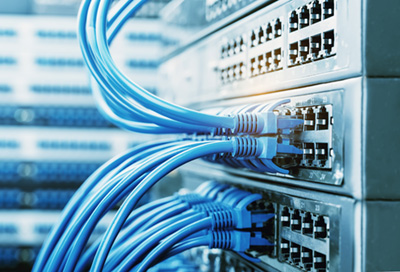All DSL VS Cable digital devices need an internet connection these days. Whether for remote access or to retrieve information, your devices must be online to function fully. You could go with a wireless connection, but only a landline has the speed and capacity to handle even the most data-hungry appliance.
However, landline connections come in several different flavors. While dial-up connections are no longer a thing, you still have several high-speed internet solutions available to you. The most common of these options is a digital subscriber line (DSL) or cable. Even with just these two options, you can have an array of options to customize your internet connection to your needs. DSL VS Cable, though they are interchangeable in most situations, each connection type has its advantages and disadvantages.
Contents
Digital Subscriber Line
DSL uses ordinary telephone lines to transmit data to and from your home. Because you probably already have a phone line, getting a DSL line usually requires less setup than any other connection type. Most DSL phone lines will ship your modem to you, leaving you to do the rest independently.
A DSL connection is not a dial-up connection, though. While it runs on your phone lines, it does not use your phone connection. It is also much faster and more reliable, typically ranging from several hundred kilobits per second to millions of bits per second.
It is also the most widely available internet connection. You will find DSL providers everywhere, even out in rural areas. Essentially, if a place gets telephone service, you can get a DSL connection there. You must love within a specific distance from an ISP to get it through, thanks to the limitations of the signal.
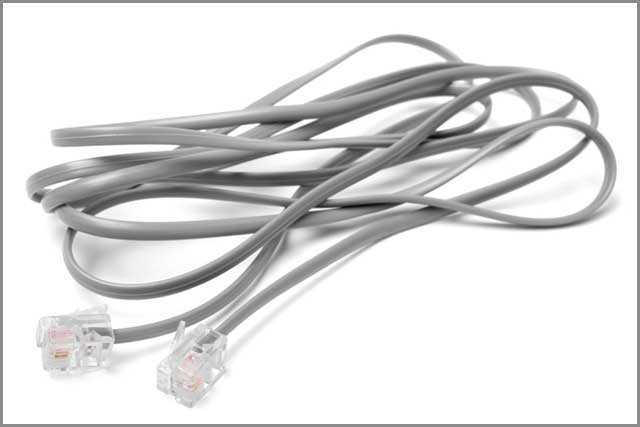
1.1 How DSL Works
DSL can use your phone line because your phone only uses a small segment of the available bandwidth through copper phone wires. Telephone calls rarely go outside the zero to four-hertz frequency range, typically called the “voiceband.” This band is just a tiny fraction of what your typical telephone wire can do, transmitting signals up to 1.5 megahertz.
DSL takes advantage of this vast unused frequency space, usually staying well above 25 kilohertz. Because the DSL signal can still interfere with your phone calls, all DSL kits come with filters or splitters to ensure that phone calls go through without issues.
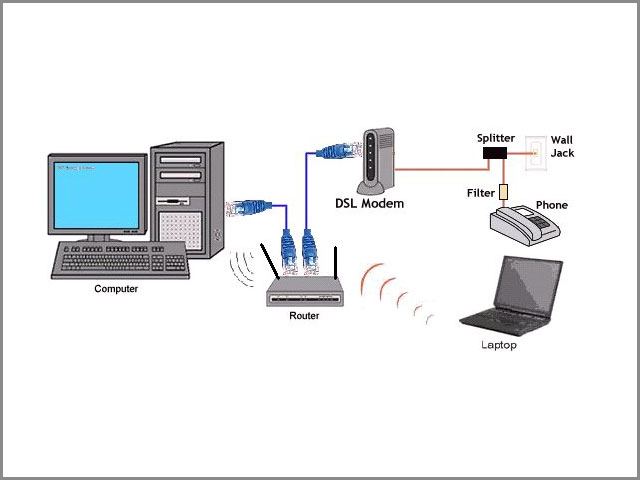
1.2 Types of DSL Connections
To get DSL for your home, you must sign up and connect to a DSL internet service provider (ISP). Your ISP will send you your DSL modem and your filter kit. Once the equipment arrives, you must then connect it to your router or computer. Some models even include built-in routers, wired and wireless, which let you hook up multiple devices without requiring extra hardware.
Regardless of your setup, you must decide if you want either ADSL or SDSL.
DSL comes in two variants: symmetric DSL (DSL) and asymmetric DSL. The difference between them is how the signal is divided between your data reception and transmission.
ADSL is the more common type. It is usually the default choice offered by most ISPs and is generally seen in residences. In ADSL, your upload speed is slower than your download speed. This is because ADSL keeps most of its bandwidth open for downstream transfers.
In contrast, SDSL splits the signal evenly. This ensures that you get the same speeds regardless if you are uploading or receiving data. Typically provided to businesses, these connections are often the more expensive options.
Businesses also have access to even faster High-bit-rate DSK (HDSL) and Very-High-bit-rate DSL (VDSL), but most people should look towards other types of internet connections if they need their speeds.
Cable Internet Connection
Cable internet describes what it sounds like. It is an internet connection through a cable television service. Because it runs on a system designed to carry data, this type of connection is often faster than your typical DSL service. However, unlike DSL, cable technology requires a shared neighborhood hub network to function, and it is often not available in rural areas. Despite this, you can get a cable connection for your Internet activities if you have access to a cable television service.
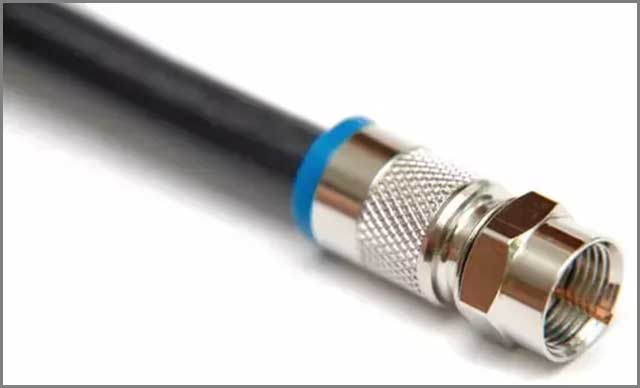
2.1 How Cable Internet Works
To use a cable connection, you need a cable modem to convert your internet network signal to something that can travel down your cable company’s coaxial cables. Your data then passes along with wires along with your cable television signal. Your internet service will not interfere with your deletion viewing, but your modem will determine your internet connection speed and performance along with your ISP’s network and traffic load.
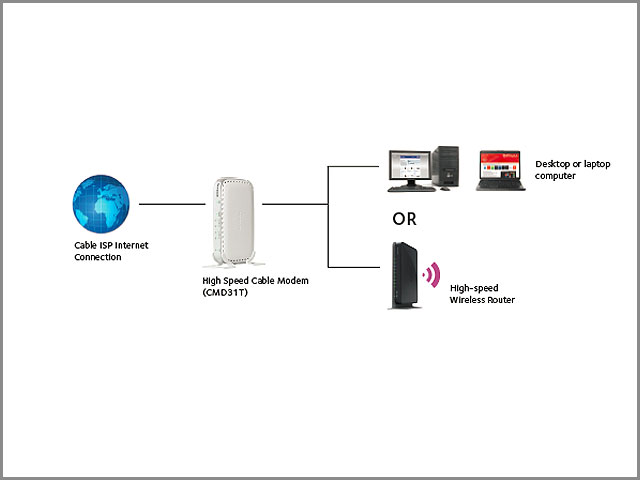
Not every cable system can offer internet service, but those can do it by using an unused cable channel for data transmission. Similar to DSL, video, and audio information takes up only a tiny sliver of the available bandwidth of a typical coaxial cable.
Your cable company splits its internet channel into two subchannels before offering you the service. These subchannels are designated for upstream and downstream transmission. Cable systems often prioritize your downloading because most people need it, but you can get synchronous connections if you need them.
That is if your cable company can offer it. Some cable systems can only handle a single data stream. These systems usually only allow downloading. So, you would need a conventional dial-up modem and connection to upload anything. Fortunately, most people can ignore this and use their cable connection for everything.
2.2 DSL VS Cable—What is DOCSIS™?
Cable modems are either Data over Cable Service Interface Specifications (DOCSIS) certified or proprietary. They are also easier to support. You want DOCSIS modems as they will work with any DOCSIS-compliant cable system. In contrast, proprietary modems will only work with their designated cable system.
2.3 The Limitations of Cable
While generally the faster and more reliable service, cable has some significant downsides. As mentioned before, the number of customers your cable service has in your neighborhood does affect your internet performance.
If everyone uses the net at the same time, your speeds could slow to a crawl. Your cable company can remedy this with another dedicated data channel, but your performance will suffer until they do.
Beyond that, you are technically on the same computer network as your neighbors. This allows anyone on your block to browse your computer easily. Because of this, you must use a firewall with a cable connection. Firewall software monitors network traffic and blocks any unauthorized access to your devices. You can either install this software onto your computer or have it built into your router.
DSL/Cable Modems And Their Connections
Regardless of the connection type you choose, it would help if you had a broadband modem to connect to it. There is a modem for every connection type. There are DSL modems, cable modems, and fiber optic modems. You can even get wireless modems to connect your computer to the local 3G or 4G cellular network.
3.1 Wired Broadband Modems
Besides their connection interface, all wired broadband modems are on the same device. They translate data signals from one network protocol to another. Cable modems handle traffic to and from cable networks while DSL modems handle DSL. Fiber connections usually do not need a separate modem as they can take all digital transmissions out of the box.
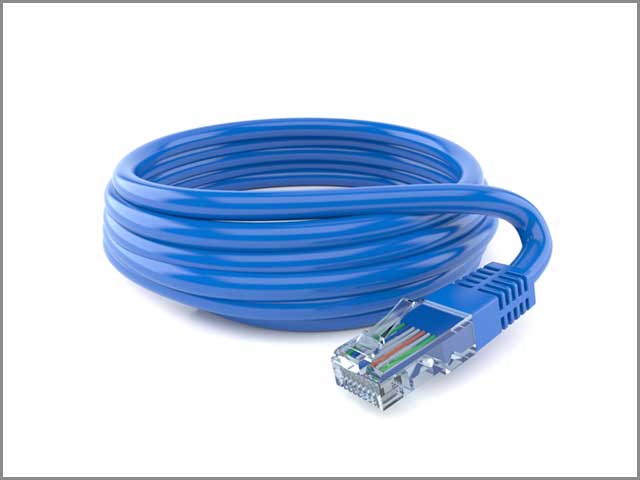
3.2 Wireless Broadband Modems
Commonly called mobile hotspots, wireless modems give you access to the local cellular data networks. Many fixed wireless broadband systems require these devices for access to the provider’s local radio transceivers. All smartphones and tablets have wireless modems built into them, which may or may not allow other devices to connect to them.
3.3 DSL VS Cable—Using Broadband Modems
While you can always buy your modem, most people rent their internet equipment from their ISP. Some modems will even come as a single unit with a built-in router, sometimes called home or residential gateway.
When installing separately, your modem connects to your router through its wide-area network (WAN) port, providing a bridge between your internal network and the Internet on the other side. This modem-to-router link is either over an Ethernet or USB cable, depending on the specifications of your devices. Either phone wires or a coaxial cable line handles the connection to the Internet service network and beyond.
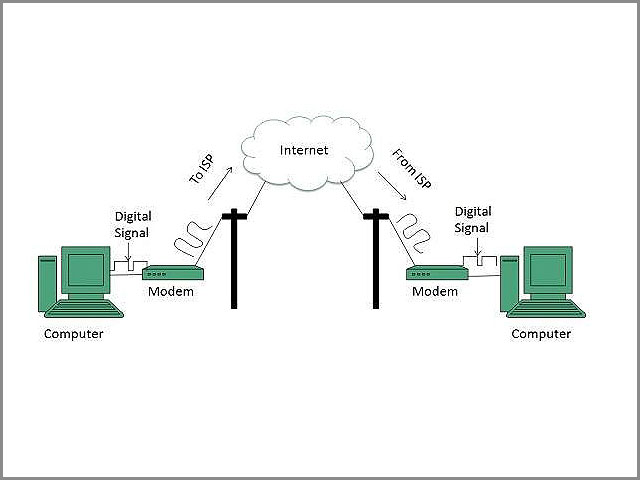
Once setup is complete, broadband modems require minimal user settings and troubleshooting. Usually, you just reset the device to reset it. All other administrative tasks are generally reserved for your service provider.
The Differences Between DSL And Cable
Both DSL and cable modems let you access the internet. Since the modems themselves translate data from one transmission format to another, their differences come from their connection type.
These service differences come in two forms. The first form is due to the nature of the transmission equipment. The other comes from the business decisions of the respective ISPs.
4.1 DSL
DSL runs on the same copper television wires that your telephone voice calls do. As such, they use essentially the same transmission protocols and limitations. The technology has a history that goes back nearly two centuries, giving DSL some positive points over cable.
For instance, your DSL connection is your DSL connection. You have a direct line to your ISP’s hub. Because of this, your bandwidth remains effectively constant, with an average speed range of 256 to 24,000 kilobits per second. For another, you do not need to get the service from your local telephone company and can use any third-party provider working in your area.
You can even get DSL without television service, called freestanding DSL, but it is not available in all areas.
4.2 DSL VS Cable—Cable
You must get your cable internet access from your local cable provider. This is because the service passes through the same coaxial cables that give you cable television. Thus, it would help if you usually had cable TV before activating your cable internet, though some providers will let you get standalone internet service in some markets.
Regardless of how you have it set up, your typical cable connection will run at speeds from 384 kilobits to more than 20 megabits per second for upstream traffic and as much as 400 megabits per second for downloads.
While cable is typically the faster internet service, it is based on shared bandwidth. In other words, your cable company puts your entire neighborhood on the same computer network. This means you can see significant bandwidth fluctuations. Plus, most cable providers restrict the maximum usage for each modem.
DSL vs Cable vs Fiber
While most people will use either cable or DSL for internet access, there are other types of connections out there. While most of these alternatives are wireless, you can opt for a fiber optic cable to the home (FTTH) service if you need a landline.
FTTH transmits data as pulses of light down thin plastic or glass tubes. The type of connection the ISP uses to connect their networks makes the fastest type of connection more acceptable. However, it is expensive to install. So, the technology does not have the wide availability as the others.
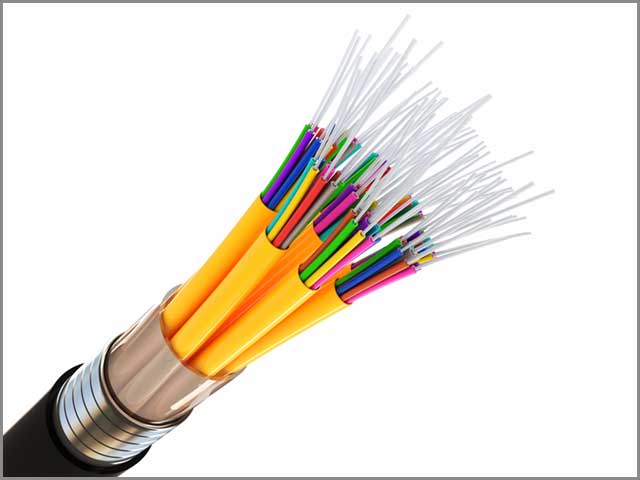
Still, if FFTH is available to you, you may want to know if you should get it. Generally, it all comes down to the features you need and the price you can afford.
5.1 DSL VS Cable—DSL
While not the fastest connection, it is the most reliable and least expensive option. Outside urban and suburban areas, it may be the only option as well.
Generally, DSL:
- Offers download speeds up to 35 Mbps and upload speeds up to 10 Mbps.
- Delivers internet through ordinary copper telephone wires
- Has 90% nationwide coverage
- Performance varies based on your distance from the local hub
- Usually has the highest latency and the lowest bandwidth
5.2 Cable
While faster than DSL, cable performance depends on how many other users are around you. At peak times, cable internet speeds can slow down near dial-up rates.
Cable:
- Provides download speed up to 500 Mbps and upload speed up to 50 Mbps
- Slows down by 20-40% during peak times
- Comes through copper coaxial television cables
- Has 89% nationwide coverage
- Shared bandwidth with your neighbors
- Usually offers higher speed and lower latency than DSL
5.3 DSL VS Cable—Fiber Internet
With the latest development in home broadband technology, FTTH still has a long way to go before it is a viable option for many. Still, it is the fastest internet connection if you can get it.
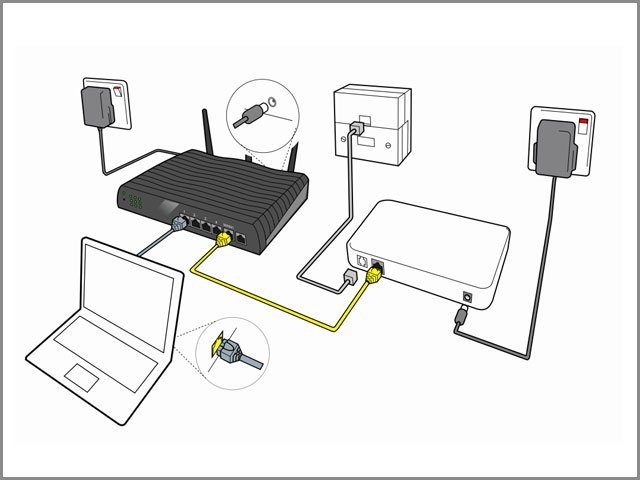
Fiber internet:
- Comes on fiber-optic cables
- Speeds up to 1,000 Mbps
- Typically, coms as a “symmetric” service with the same speed for both upload and download
- Speed not affected by distance
- Has 25% national coverage
- Is reliable and future proof
- Is generally the most expensive option
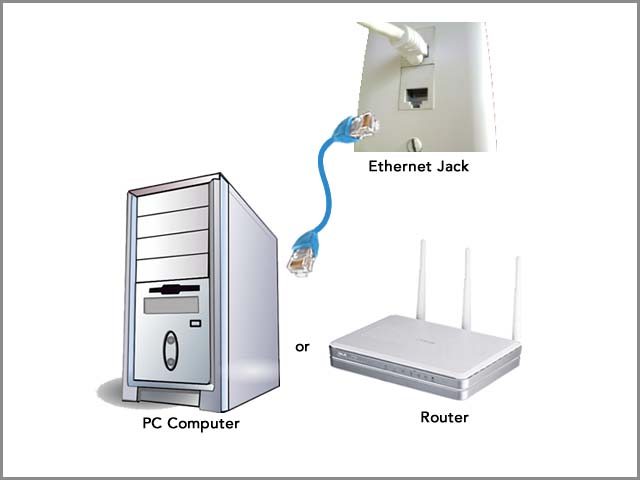
How To Choose Between DSL And Cable?
Fiber is your best option, but it might not be available to you. Because of this, your landline broadband internet options are usually just between DSL and cable.

These two options are effectively the same for most people, and the choice typically comes down to convenience. If you already have cable television service, cable internet will serve you well. If you have phone service and do not want cable, you can go with DSL.
Availability may affect your decision as well. DSL has broader national coverage than cable, making it the best option for rural areas where the only other choice for internet access is through satellite.
Beyond these two factors, everything comes down to personal preference.
Cable offers higher speeds but can be steeply inconsistent during peak hours.
DSL might be slower, but it remains consistent and reliable throughout the day. DSL services also rarely have data caps, which are common in the cable realm.
Providers of both types of internet access offer several tiers of services that allow you to tailor your service to your needs. You generally want the lowest option that provides the speeds, bandwidth, and features you want or need. Because of this, you may wish to access your speed and bandwidth needs before choosing an option. A good speed test tool will provide this data based on your household internet usage.
6.1 DSL VS Cable—Should You Get Both?
With their differences, you may wonder if you should get both. That would not be a wise choice. Both connection types offer the same service. From the perspective of your devices, both services are the same. Therefore, you will double your costs if you decide to go with both, especially if you already have cable television service.
Conclusion
While DSL and cable internet offers the same effective service for most people, they have advantages and disadvantages. They can swing you towards one type of internet connection over another. Though your decisions will essentially be one of availability and convenience, you want the fastest and most reliable connection you can afford. Most of the time, you should go with cable. However, there will be times when DSL is the more.
